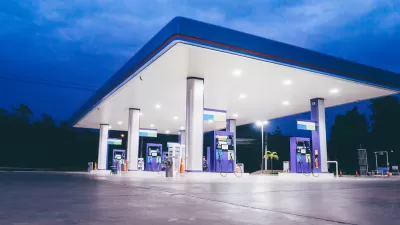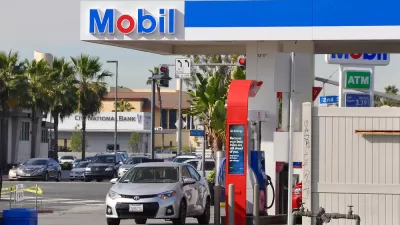The Idaho Department of Transportation wasted no time in doing what they promised after the legislature passed a seven-cents gas tax and registration fee increase in April: repairing roads and bridges with the new funds the state split with cities.
While legislatures in other states, e.g., California, were unable to come to an agreement on how to raise new revenue or redirect existing funds to repair roads and bridges, Idaho fast-tracked new gas tax and registration fee funds from a transportation funding bill (PDF) that passed in April and was signed by Governor C. L. “Butch” Otter toward 27 projects that the Idaho Transportation Department's board voted to support in May.
"Now, Idaho's Transportation Department [ITD] is breaking down exactly where that money has gone and what projects are coming up next," writes Karen Zatkulak of KTVB, Boise. "The Idaho Transportation Department says they were immediately ready to take their portion of the funding and put it back into roads in desperate need of updates."
"Really it's about maintaining what we have, not adding new lanes, not adding capacity to the system," said Vince Trimboli with ITD.
ITD says the money must be spent on critical projects, top layer work to maintain the life of the roads, along with bigger repairs for damaged areas.
However, the Gem State is not out of the transportation woods yet. "Trimboli says nearly $300 million more is needed just to keep infrastructure up to standards. Despite what they asked for, they got only about $47 million."
That comes as no surprise. Back in April, "Republican Sen. Marv Hagedorn said 7 cents per gallon would only scratch the surface of what Idaho needs to maintain its highways," notes the prior post. Revenue from the April bill was "split 60, 40 between ITD and local jurisdictions," notes Katkulak."
Before the seven-cents gas tax increase, the gas tax hadn't been raised since 1996. "ITD hasn't seen a transportation budget increase in nearly two decades," adds Katkulak. The state's 32-cent gas tax is less than two cents greater than the average state gas tax of 30.29 cents.
FULL STORY: ITD focusing on fixing roads amid funding challenges

Planetizen Federal Action Tracker
A weekly monitor of how Trump’s orders and actions are impacting planners and planning in America.

San Francisco's School District Spent $105M To Build Affordable Housing for Teachers — And That's Just the Beginning
SFUSD joins a growing list of school districts using their land holdings to address housing affordability challenges faced by their own employees.

The Tiny, Adorable $7,000 Car Turning Japan Onto EVs
The single seat Mibot charges from a regular plug as quickly as an iPad, and is about half the price of an average EV.

Seattle's Plan for Adopting Driverless Cars
Equity, safety, accessibility and affordability are front of mind as the city prepares for robotaxis and other autonomous vehicles.

As Trump Phases Out FEMA, Is It Time to Flee the Floodplains?
With less federal funding available for disaster relief efforts, the need to relocate at-risk communities is more urgent than ever.

With Protected Lanes, 460% More People Commute by Bike
For those needing more ammo, more data proving what we already knew is here.
Urban Design for Planners 1: Software Tools
This six-course series explores essential urban design concepts using open source software and equips planners with the tools they need to participate fully in the urban design process.
Planning for Universal Design
Learn the tools for implementing Universal Design in planning regulations.
Smith Gee Studio
City of Charlotte
City of Camden Redevelopment Agency
City of Astoria
Transportation Research & Education Center (TREC) at Portland State University
US High Speed Rail Association
City of Camden Redevelopment Agency
Municipality of Princeton (NJ)





























